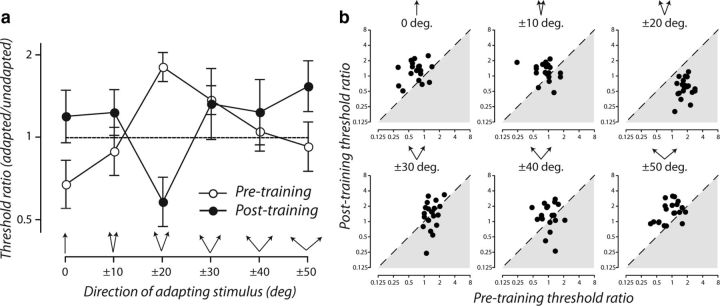Figure 4.
Learning reconfigures adapted discriminative accuracy. a, White circles show the mean change in direction discrimination thresholds caused by adaptation to visual motion in an upward direction or directions offset symmetrically from upward. Black circles show the same function after the same group of subjects had repeatedly practiced the direction discrimination task while adapted to directions offset ±20° from upward. Symbols are the geometric mean discrimination thresholds of 20 subjects; error bars are ±95% CIs estimated from the intersubject variability of log-transformed threshold ratios. b, In each panel, the ratio of individual subjects' adapted and unadapted discrimination thresholds before training are plotted as a function of those obtained after training. Panels correspond to different adapting directions.

